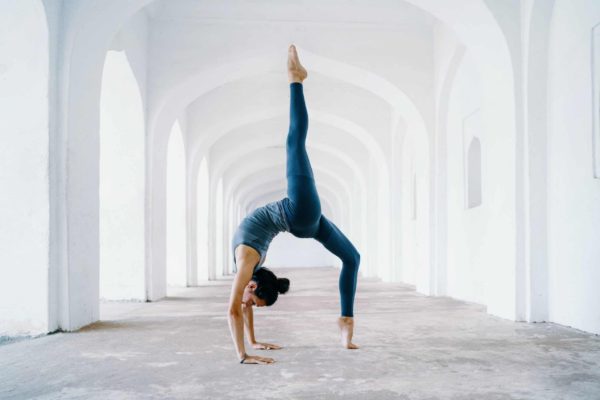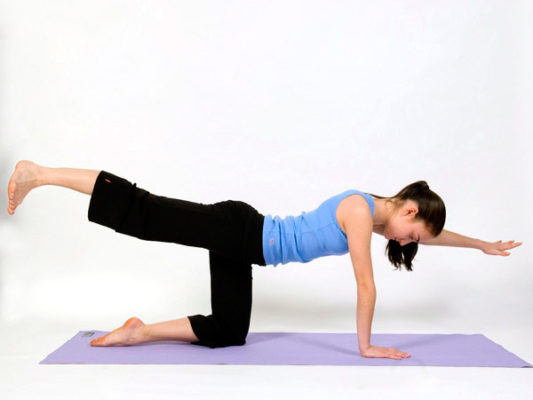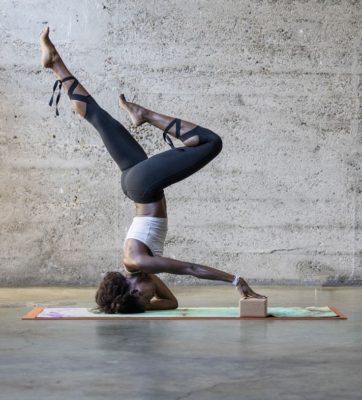Yoga Asanas for the strength of your back

Yoga asanas to strengthen your back
According to the American Chiropractic Association, it is estimated that as much as 80% of the population will experience a back problem at some time in their lives. Low back pain in particular is the single leading cause of disability worldwide.
These alarming numbers speak to the importance of taking care of you back now, before it sidelines your life. Apart from maintaining a healthy diet and weight, regular exercise, and practicing proper posture, yoga can be an extremely effective tool for preventing and mitigating back pain. This ancient practice is also known for strengthening your back, which goes hand in hand with the prevention of back issues.
As always, if you already suffer from back problems, consult with your doctor first on whether it’s safe to practice yoga (or any physical activity for that matter).
For lower back pain relief, try choosing five or six from the list below as a flow, and plan on holding each pose for 10 seconds to one minute, making sure to take deep breaths throughout the hold.
If your lower back feels relief with that sequence, you can work up to holding each pose for longer, up to three minutes. In terms of frequency, you can do yoga daily if you’d like, but if you’re doing beginner yoga for back pain, start with just a couple times per week. Also, many people find it useful to break up these lower back exercises into a few mini-sessions when their back feels particularly tight, like first thing in the morning or after sitting at work all day.
Yoga is a very popular and safe form of exercise. Many people think of yoga as just a good way to relieve stress and tension, but it can also help you reduce back pain and maintain a healthy spine. Yoga poses, called asanas, are important because they help stretch and strengthen important back muscle.
Although there’s more to yoga than the postures—breath control and meditation are just as essential as poses are in yoga—this article highlights the benefits of doing yoga poses, including how they can prevent back pain.

Following are the best asanas for the strength of the back
If long working hours involving a lot of sitting time, incorrect posture and less exposure to sunlight sound similar to you, we’re sure you’ve at some point experienced back pain. Not just at work but traveling also takes a toll on your back muscles. You’ll be surprised to know that back injuries, simple back stiffness and back pain are quite prevalent even among the youth today. The only remedy here is to strengthen the back muscles!
Tadasana (Mountain Pose):
Tadasana is a basic asana for various standing yoga poses! It is excellent for improving posture, maintaining the curvature of your back and strengthening the hips and thigh muscles.
- Stand straight and keep a small gap between your feet
- Keep your hands straight on the sides, stretching the wrist and fingers.
- Elongate and stretch your back, widen your collar bone and straighten your shoulder blade, relaxing them down the back
- Stand on your toes while stretching the knees, thighs and hip muscles without tightening the belly muscles.
- Stay in this pose for 20-30 seconds breathing easily.
Virabhadrasana or Warrior Pose i
Virabhadrasana or warrior pose a group of related lunging standing asanas or yoga poses. The asana is pronounced as Vee- Ra- Bha- Dra-asana. Warrior Pose I is one of the three Warrior poses that beautifully combines both the standing and balancing actions of the body.
Although foundational in nature, what makes the Virabhadrasana series unique, powerful, and a bit complex at the same time, is the fact that you are required to balance simultaneous movements in different directions,” feels Suman Chhabria, Certified Yoga instructor and founder of Anaya who says this act of balancing directly works on creating stillness in the mind, building focus, power, and stability,
This asana is considered to be one of the most graceful postures in yoga, and it adds a whole lot of beauty to the workout.
- Stand in Tadasana pose and keep your feet around 4 feet apart
- Turn your left foot out by 90 degrees and left foot in by 15 degrees
- Bring both the hands above the head, join your palms and keep your eyes up at the thumbs
- Rotate your torso to the left, bend the knees while keeping them above the ankle (avoid bending more than that). Exhale.
- Stand in this posture for around 30 seconds.
- Straighten the knee while you inhale and bring your hand down

Exhale and come back to the Tadasana pose.
This asana is pronounced as Tree-Kone-Nah -sah-Nah (Trikonasana). The word ‘Trikonasana’ arrives in the Sanskrit words, ‘Trikona’ meaning three corners, and ‘Asana’ refers to posture. In trikonasana yoga, the person straights their legs apart without bending the knees, wherein hands spread apart, creating an angle of 90 degrees between the upper and the lower part of the body. Unlike most yoga postures, the Triangle Pose needs to keep the eyes open in order to maintain body balance.
As the name suggests, it’s a triangle posture which stretches the spine, opens up the chest and shoulder as well as reduces tension on the hip and thigh muscles. It helps in improving physical and mental equilibrium.
- Stand in Tadasana pose and separate the feet wide apart, around four feet from each other
- Turn your right foot out 90 degrees and left foot in by 15 degrees. Now align the center of your right heel with the center of your arch of the left foot
- Inhale deeply and as you exhale, bend your body to the right, downward from the hips, keeping the waist straight, allowing your left hand to come up in the air while your right hand comes down towards the floor. Keep both arms in a straight line.
- Rest your right hand on your shin, ankle, or the floor outside your right foot, whatever is possible without distorting the sides of the waist. Stretch your left arm toward the ceiling, in line with the top of your shoulders. Keep your head in a neutral position or turn it to the left, eyes gazing softly at the left palm.
- Ascertain that your body is bent sideways and not backward or forward. Pelvis and chest are wide open.
- Stretch maximum and be steady. Keep taking in long, deep breaths. With each exhalation, relax the body more and more. Just be with the body and the breath.
- As you inhale, come up, bring your arms down to your sides, and straighten your feet.

Salabhasana (Locust Pose or Grasshopper Pose)
Salabhasana prepares beginners for a deeper backbend, strengthening the muscles of the entire torso from the nape of the neck, spine, chest, and legs to the back of the heels. It is a part of Hatha Yoga which stimulates the functioning of abdominal organs and relieves stress.
- Lie on your belly with your arms along the torso, palms up, forehead resting on the floor (use a yoga mat)
- Turn your big toes towards each other inwardly rotating your thighs and firm your buttocks.
- Exhale and lift your head, upper torso, arms and legs away from the floor. You will be resting your entire weight on your lower ribs, belly and front pelvis
- Raise your arms parallel to the floor and stretch back actively through your fingertips. Press your scapula firmly into your back
- Keep the base of the skull lifted and back of the neck nicely long
- Stay in this asana for 15-30 seconds then release slowly with exhalation.
Half Lord Of The Fishes Pose – Ardha Matsyendrasana
Step by step
- Sit with your legs outstretched in front of you in Staff Pose / Dandasana.
- Lift your right leg and place your right foot on the outside of your left knee. Bend your left leg and place the left foot on the outside of your right hip.
- Lift your right leg and place your right foot on the outside of your left knee. Bend your left leg and place the left foot on the outside of your right hip.
- As you inhale, press your sitting bones down and lengthen your spine. Place your right arm behind you, extend your left arm up.
- As you exhale, twist your body to the right, hugging your knee with your left arm, or hooking your elbow behind your left knee.
- Keep lengthening your spine on the in-breath and twisting from the belly on the out-breath.
- Find ease and your appropriate edge in that pose by moving in and out with barely noticeable pulses. Allow your hips to follow the movement of the spine to some degree.
- Stay for 5 to 8 breaths.
- To come out of the pose, come out of the twist as you exhale and move back into Dandasana.
- Repeat on the other side.

